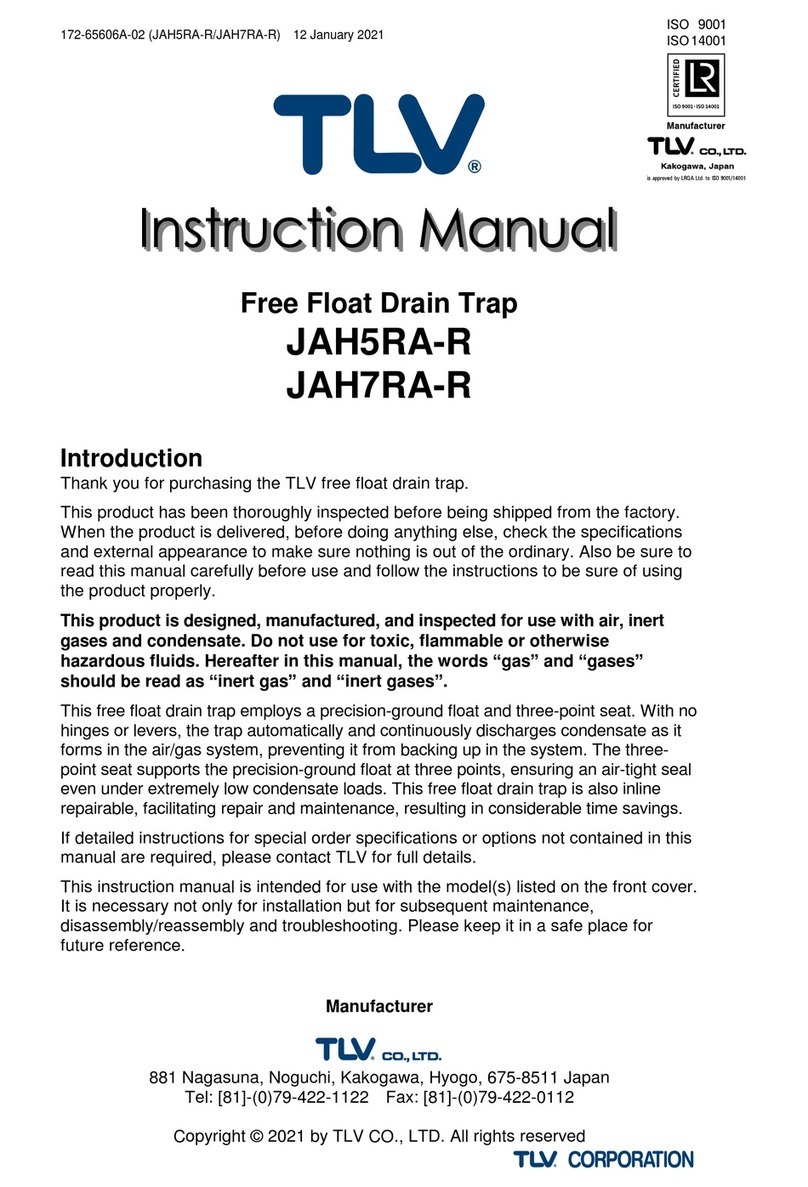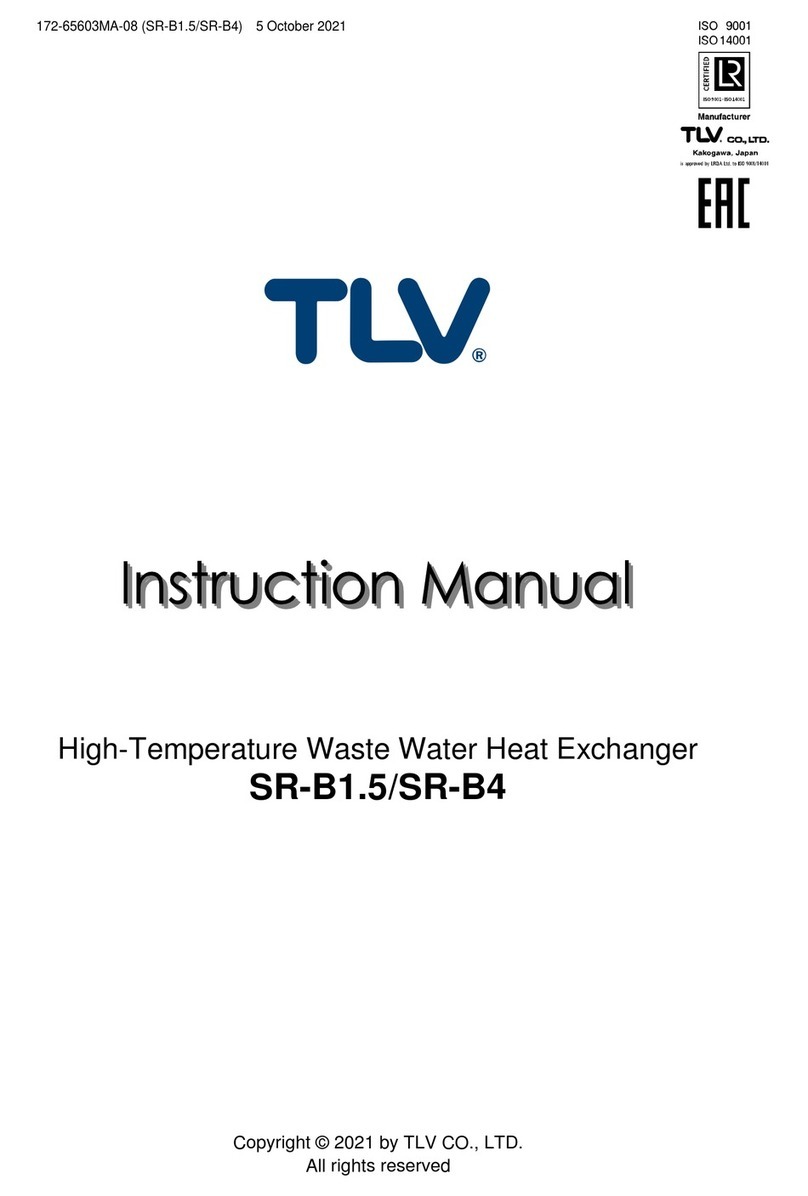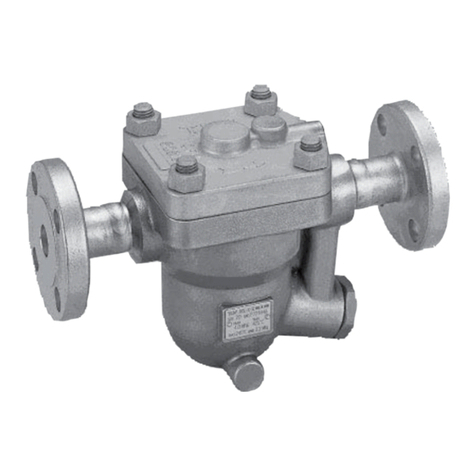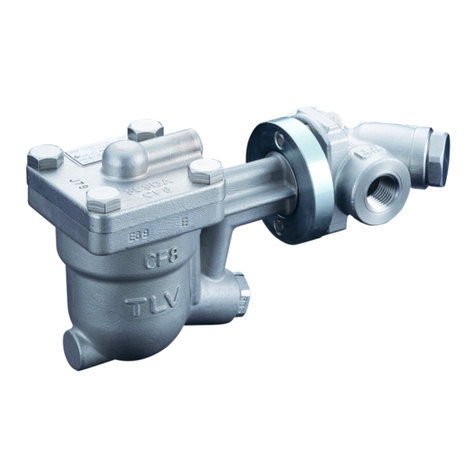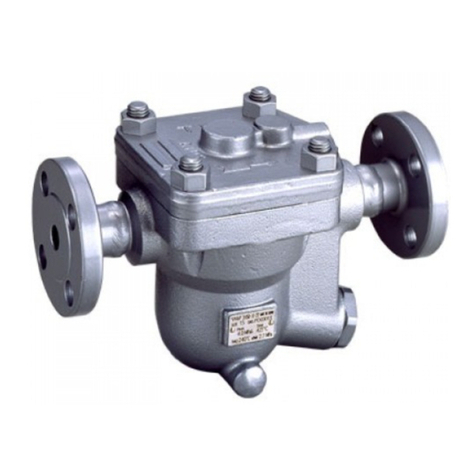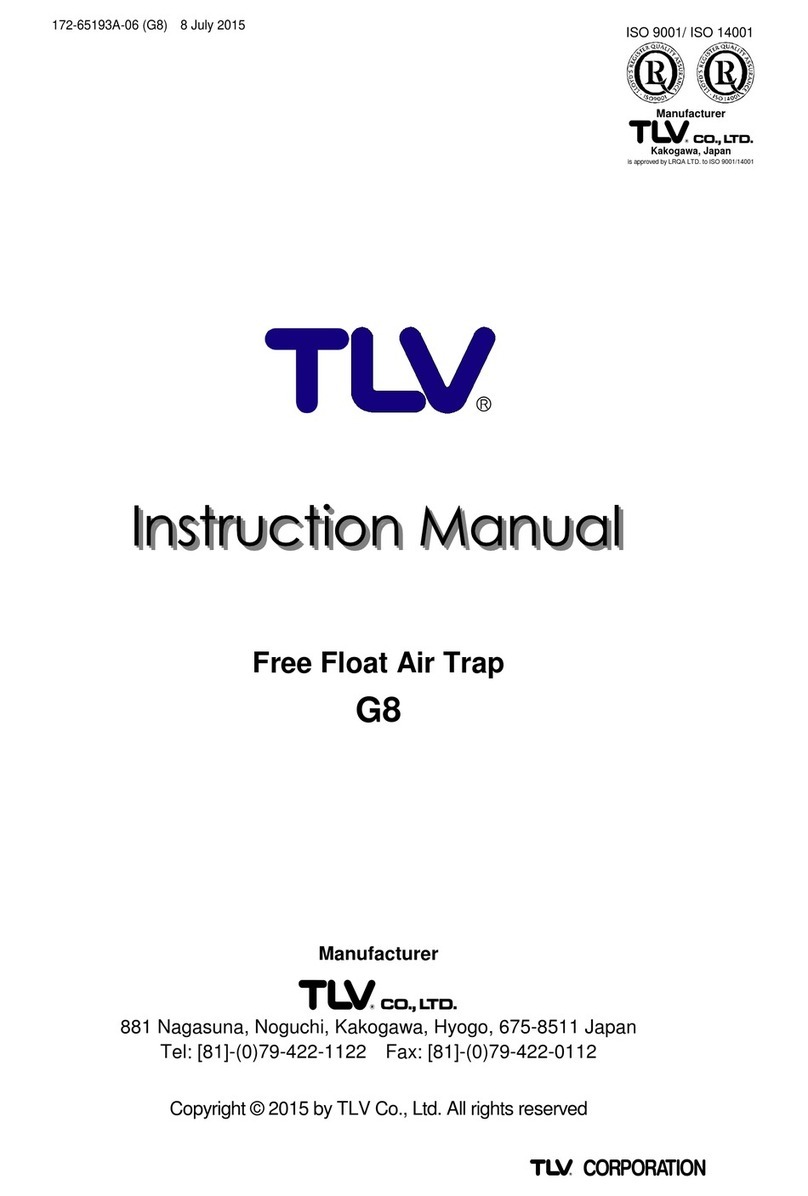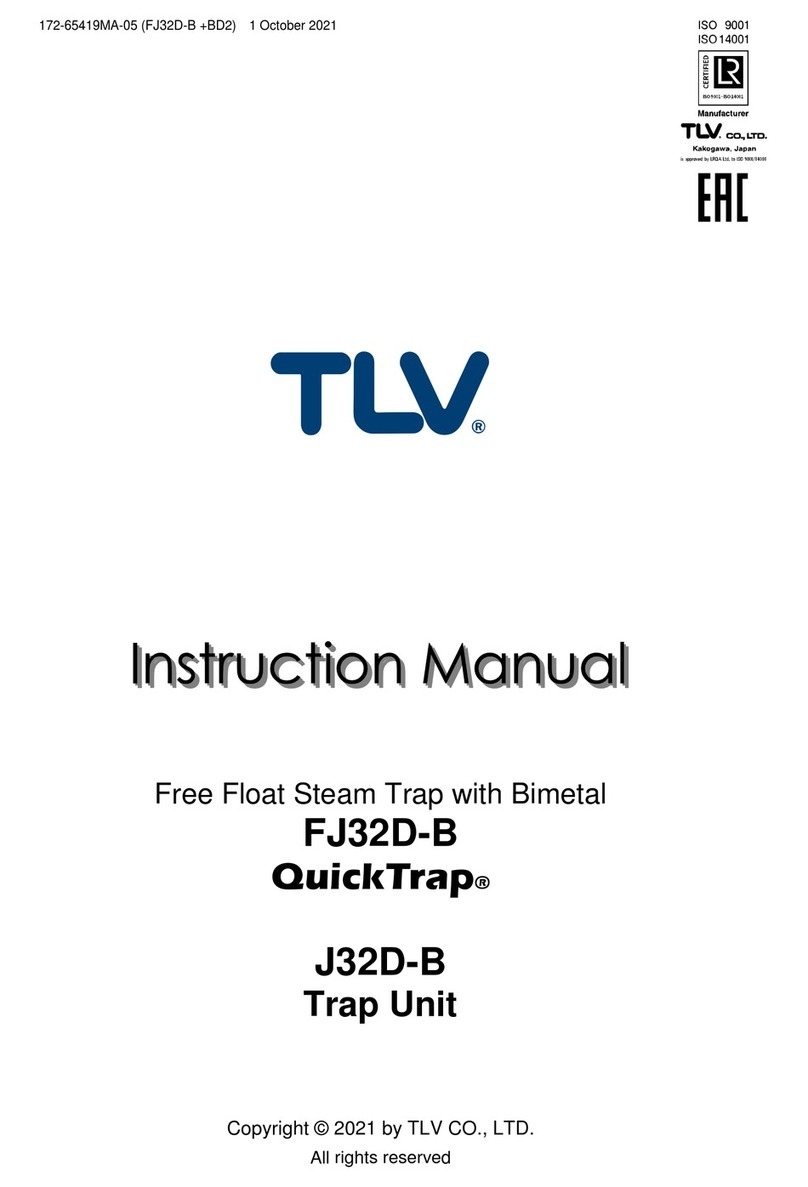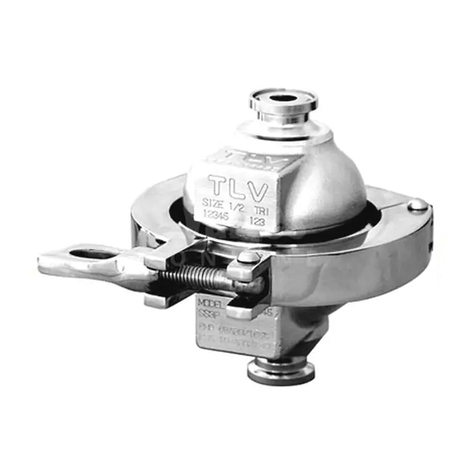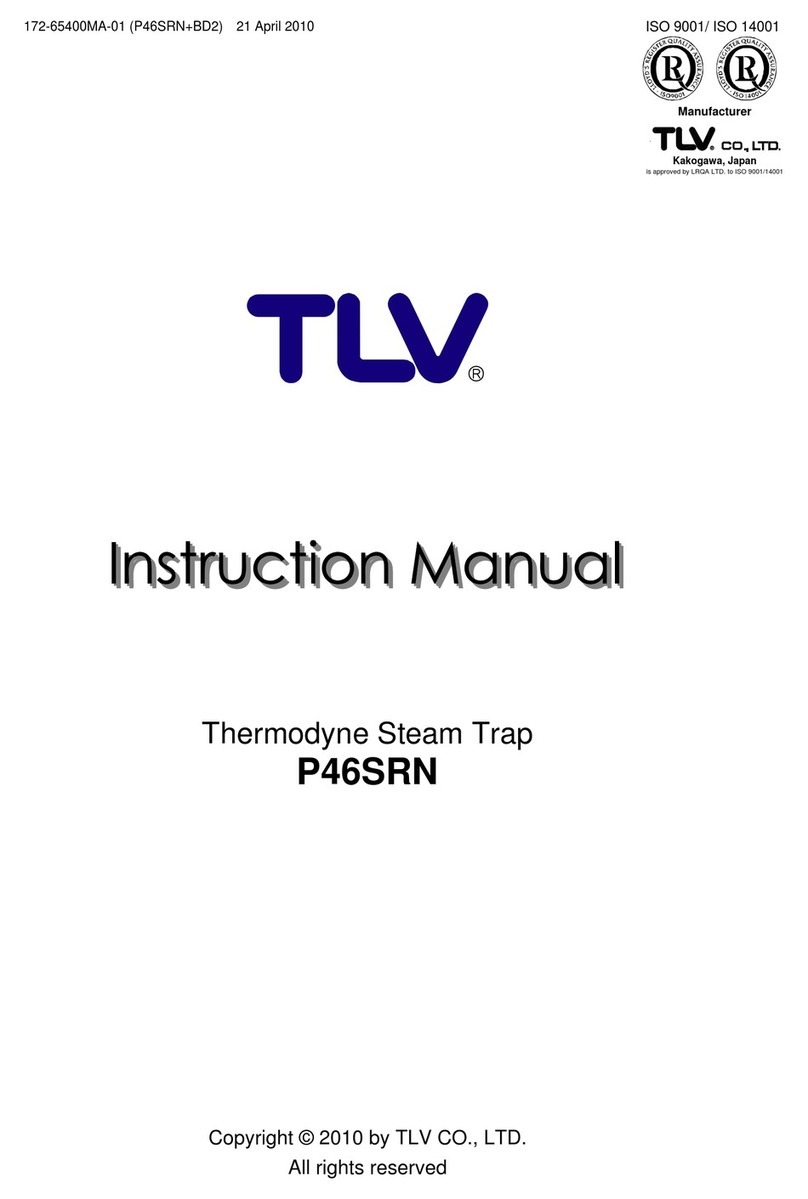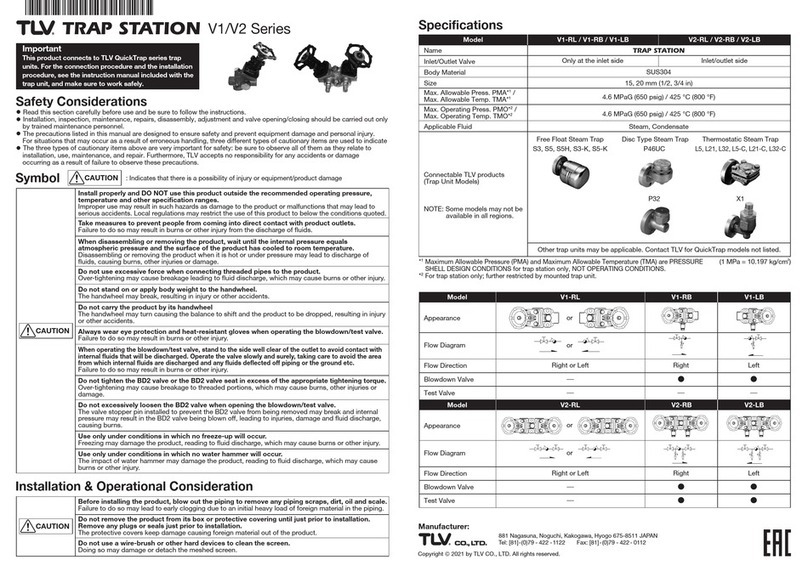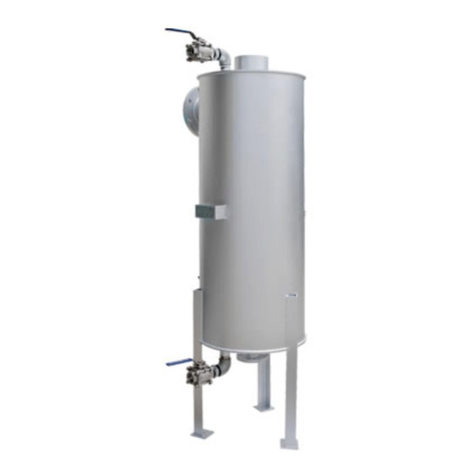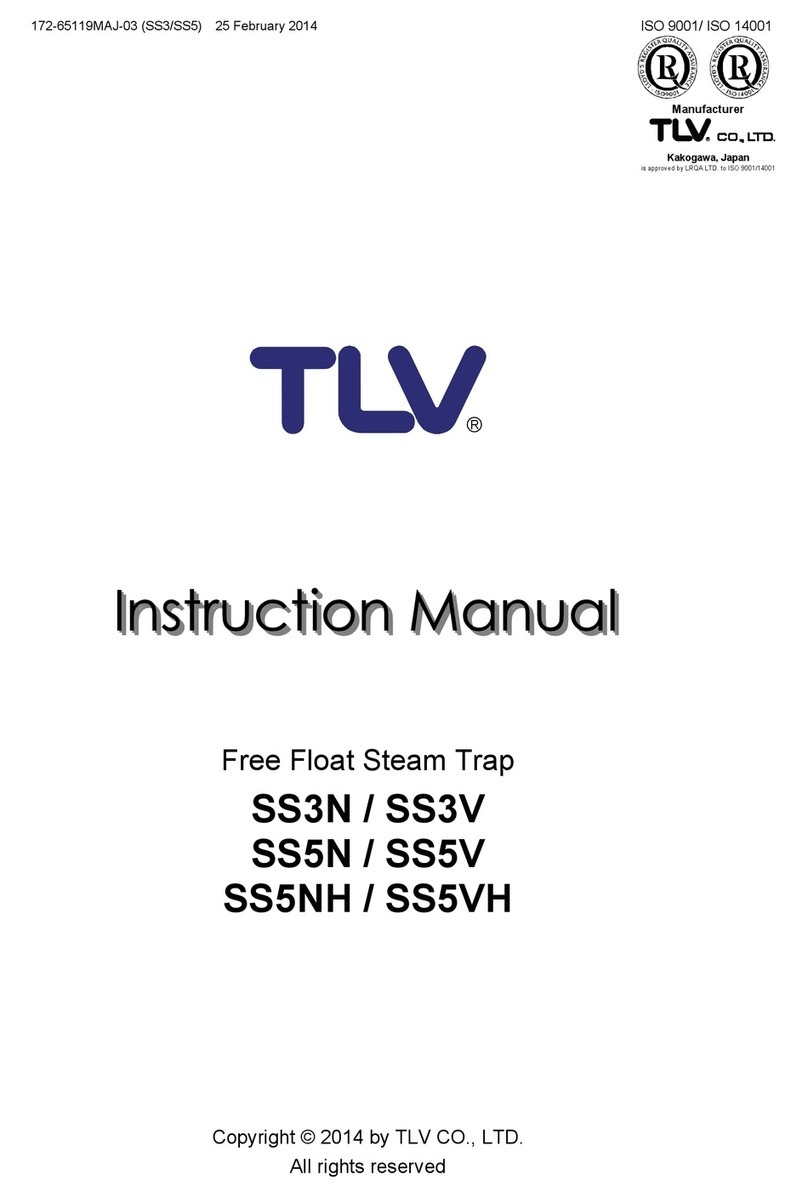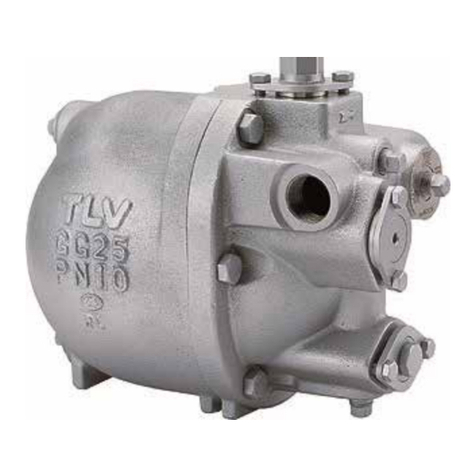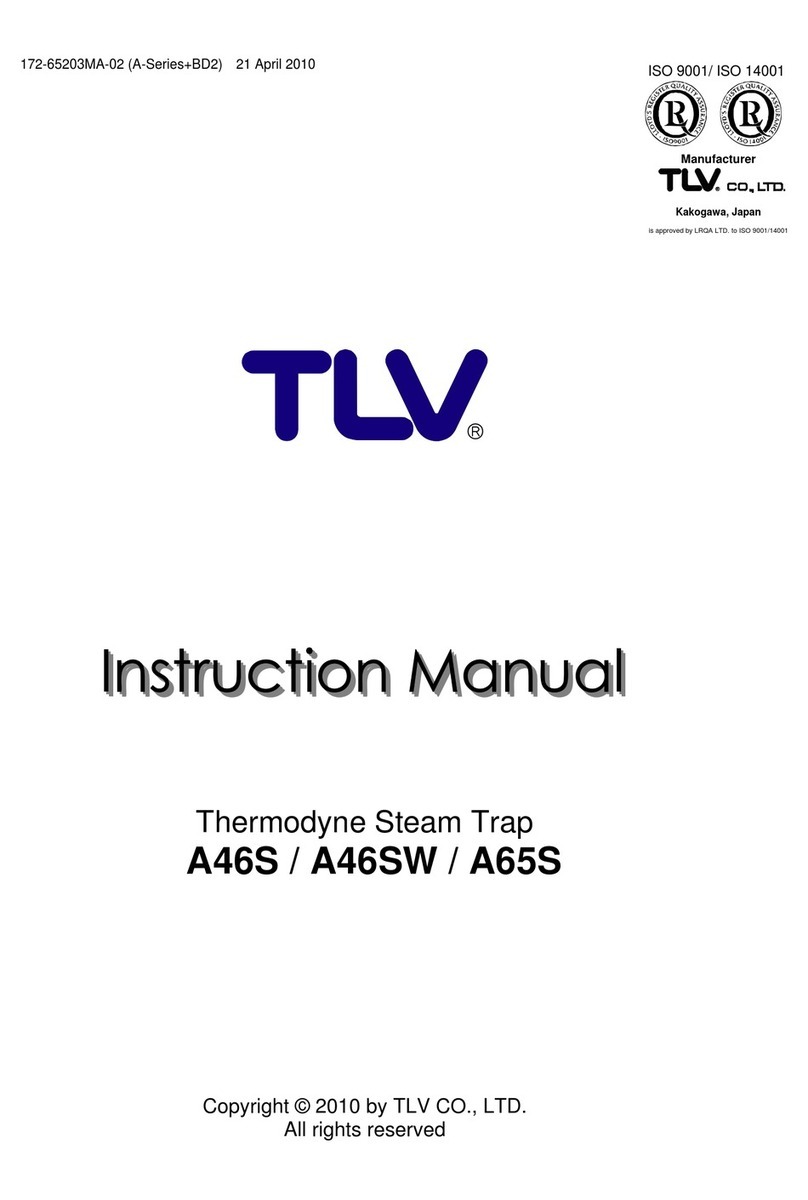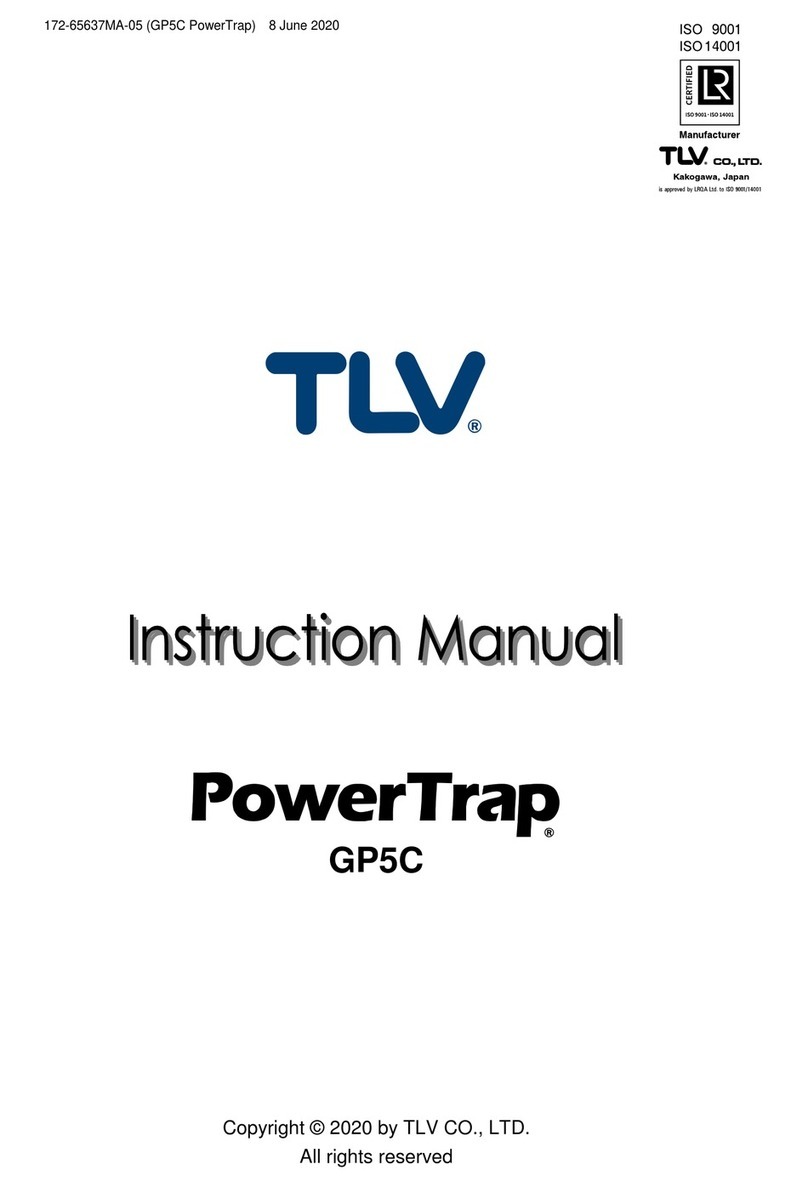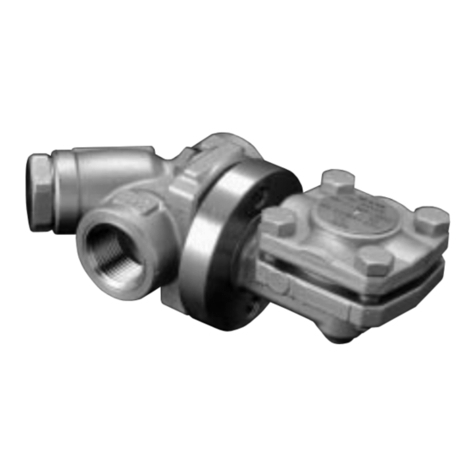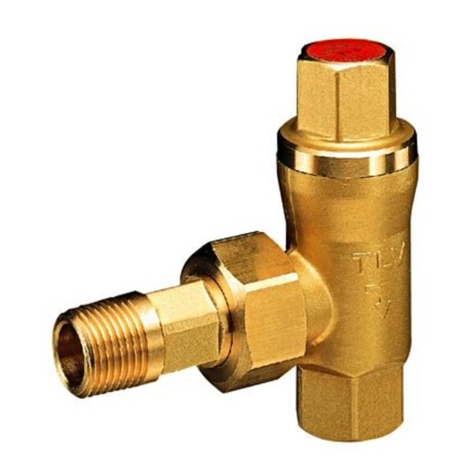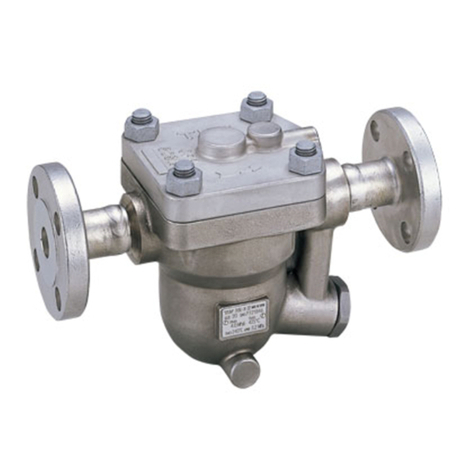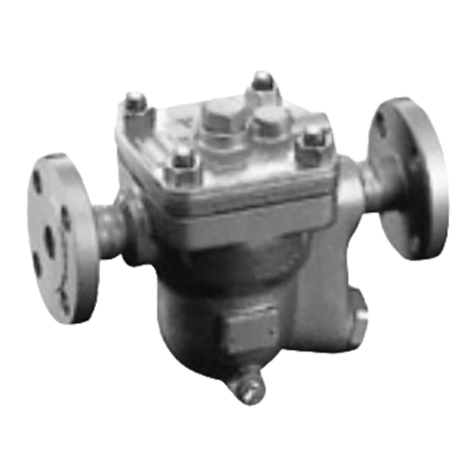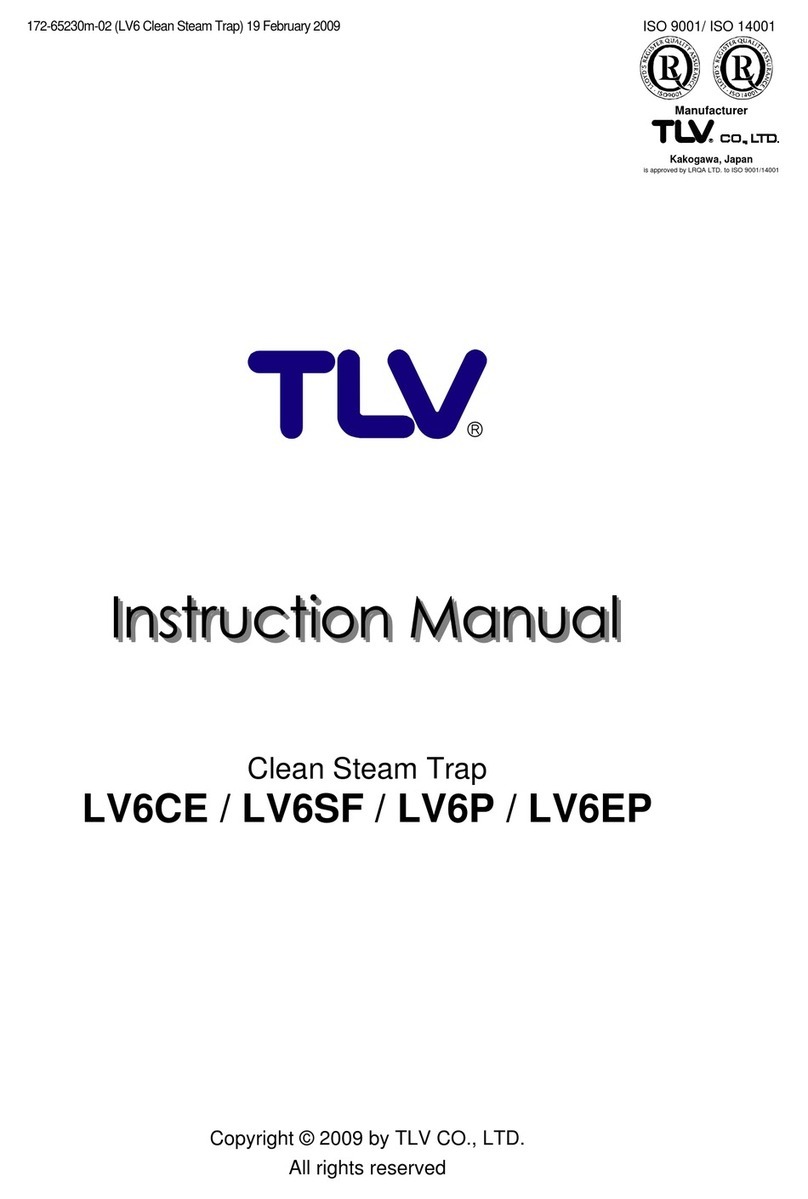TLV PowerDyne P21S User manual

172-65208MA-01 (P21S) 9 March 2011
Thermodynamic Steam Trap
P21S
Copyright © 2011 by TLV CO., LTD.
All rights reserved
ISO 9001/ ISO 14001
Manufacturer
Kakogawa, Japan
is approved by LRQA LTD. to ISO 9001/14001
TM

72-65208MA-01 (P21S) 9 Mar 2011
1
Contents
Introduction .......................................................................1
Safety Considerations.......................................................2
Checking the Piping..........................................................4
Specifications....................................................................5
Configuration.....................................................................5
Operation ..........................................................................6
Installation.........................................................................7
Maintenance......................................................................8
Disassembly / Reassembly...............................................8
Troubleshooting ..............................................................11
Product Warranty............................................................12
Introduction
Thank you for purchasing the PowerDyne Thermodynamic Steam
Trap.
This product has been thoroughly inspected before being shipped from the
factory. When the product is delivered, before doing anything else, check the
specifications and external appearance to make sure nothing is out of the
ordinary. Also be sure to read this manual carefully before use and follow the
instructions to be sure of using the product properly.
This PowerDyne Thermodynamic Steam Trap employs an air-jacketed
pressure chamber that prevents no-load actuation and steam loss in general.
For products with special order specifications or options, if detailed
instructions for the special order specifications or options are not contained in
this manual, please contact for full details.
This instruction manual is intended for use with the model(s) listed on the
front cover. It is necessary not only for installation but for subsequent
maintenance, disassembly/reassembly and troubleshooting. Please keep it in
a safe place for future reference.

172-65208MA-01 (P21S) 9 Mar 2011
2
Safety Considerations
•Read this section carefully before use and be sure to follow the
instructions.
•Installation, inspection, maintenance, repairs, disassembly, adjustment,
and valve opening/closing should be carried out only by trained
maintenance personnel.
•The precautions listed in this manual are designed to ensure safety and
prevent equipment damage and personal injury. For situations that may
occur as a result of erroneous handling, three different types of cautionary
items are used to indicate the degree of urgency and the scale of potential
damage and danger: DANGER, WARNING and CAUTION.
•The three types of cautionary items above are very important for safety:
be sure to observe all of them as they relate to installation, use,
maintenance, and repair. Furthermore, TLV accepts no responsibility for
any accidents or damage occurring as a result of failure to observe these
precautions.
Symbols
Indicates a DANGER, WARNING or CAUTION item.
DANGER Indicates an urgent situation which poses a threat of death or
serious injury
WARNING Indicates that there is a potential threat of death or serious injury
CAUTION Indicates that there is a possibility of injury or equipment /
product damage
CAUTION Install properly and DO NOT use this product outside the
recommended operating pressure, temperature and other
specification ranges.
Improper use may result in such hazards as damage to the product
or malfunctions that may lead to serious accidents. Local
regulations may restrict the use of this product to below the
conditions quoted.
Take measures to prevent people from coming into direct
contact with product outlets.
Failure to do so may result in burns or other injury from the
discharge of fluids.
When disassembling or removing the product, wait until the
internal pressure equals atmospheric pressure and the
surface of the product has cooled to room temperature.
Disassembling or removing the product when it is hot or under
pressure may lead to discharge of fluids, causing burns, other
injuries or damage.
Safety considerations continued on next page.

172-65208MA-01 (P21S) 9 Mar 2011
3
Be sure to use only the recommended components when
repairing the product, and NEVER attempt to modify the
product in any way.
Failure to observe these precautions may result in damage to the
product and burns or other injury due to malfunction or the
discharge of fluids.
Use only under conditions in which no freeze-up will occur.
Freezing may damage the product, leading to fluid discharge,
which may cause burns or other injury.
CAUTION
Use only under conditions in which no water hammer will
occur.
The impact of water hammer may damage the product, leading to
fluid discharge, which may cause burns or other injury.

172-65208MA-01 (P21S) 9 Mar 2011
4
Checking the Piping
Use only under conditions in which no water hammer will occur. The
impact of water hammer may damage the product, leading to fluid
discharge, which may cause burns or other injury.
CAUTION
Check to make sure that the pipes to be connected to the trap have been
installed properly.
1. Is the pipe diameter suitable?
2. Has sufficient space been secured for maintenance?
1. Have isolation valves been installed at the inlet and outlet? If the outlet is
subject to back pressure, has a check valve been installed?
2. Is the inlet pipe as short as possible, with as few bends as possible, and
installed so the liquid will flow naturally down into the trap?
3. Has the piping work been done correctly, as shown in the figures below?
Requirement Correct Incorrect
Install catchpot with the
proper diameter.
Diamete
r
is too small.
Make sure the flow of
condensate is not
obstructed.
Diameter is too small and
inlet protrudes into pipe
interior.
To prevent rust and
scale from flowing into
the trap, the inlet pipe
should be connected 25
– 50 mm (1 – 2 in)
above the base of the
T-pipe.
Rust and scale flow into
the trap with the
condensate.
When installing on the
blind end, make sure
the flow of condensate
is not obstructed.
Condensate collects in the
pipe.

172-65208MA-01 (P21S) 9 Mar 2011
5
Specifications
Install properly and DO NOT use this product outside the recommended
operating pressure, temperature and other specification ranges.
Improper use may result in such hazards as damage to the product or
malfunctions which may lead to serious accidents. Local regulations
may restrict the use of this product to below the conditions quoted.
CAUTION
Use only under conditions in which no freeze-up will occur. Freezing
may damage the product, leading to fluid discharge, which may cause
burns or other injury.
CAUTION
Refer to the product nameplate for detailed specifications.
Minimum Operating Pressure: 0.025MPaG (3.5 psig)
Back pressure should not exceed 50% of the inlet pressure
* Maximum allowable pressure (PMA) and maximum allowable temperature (TMA) are PRESSURE SHELL
DESIGN CONDITIONS, NOT OPERATING CONDITIONS.
** Valve No. is displayed for products with options. This item is omitted from the nameplate when there are
no options.
Configuration
No. Name M* R*
1 Body
2 Cover √
3 Nameplate √
4 Disc √
5 Screen √
6 Screen Holder Gasket √√
7 Screen Holder
8 Cap √
* Replacement parts are available only in
the following kits:
M = Maintenance Kit; R = Repair Kit
Model
Maximum Allowable Pressure*
Nominal Diameter
Maximum Operating Pressure Maximum Operating Temperature TMO
Serial Number
Maximum Allowable Temperature* TMA
Valve No.**

172-65208MA-01 (P21S) 9 Mar 2011
6
Operation
Principle of Air and Condensate Discharge
1. Start-up: Discharge of Initial Air and Cold Condensate
At start-up, the flow of large quantities of initial air and cold condensate lift the
disc off the seat, thus opening the valve. This allows for the rapid discharge of
initial air and cold condensate.
2. Steam Enters, Valve Closes
The rapid influx of steam creates a low-pressure region under the disc, which
suctions it onto the seat. The pressure chamber above the disc becomes a high-
pressure region when entering steam is compressed. This difference in the
pressures above and below the disc gives the closed valve a tight seal.
3. Condensate Discharge
When condensate enters the trap, the temperature in the pressure chamber
drops, causing the steam to condense and the pressure to drop. The inlet
pressure, which is now greater than the pressure pushing down on the disc,
opens the valve, thus allowing condensate to be discharged. When steam again
enters the trap, the valve closes, as in step 2. In this manner, condensate is
automatically and intermittently discharged as the valve opens and closes.
Ai
r
Cold Condensate
Steam
Condensate

172-65208MA-01 (P21S) 9 Mar 2011
7
Installation
Install properly and DO NOT use this product outside the recommended
operating pressure, temperature and other specification ranges.
Improper use may result in such hazards as damage to the product or
malfunctions which may lead to serious accidents. Local regulations
may restrict the use of this product to below the conditions quoted.
CAUTION
Take measures to prevent people from coming into direct contact with
product outlets. Failure to do so may result in burns or other injury from
the discharge of fluids.
CAUTION
Installation, inspection, maintenance, repairs, disassembly, adjustment and valve
opening/closing should be carried out only by trained maintenance personnel.
1. Before installation, be sure to remove all protective seals.
2. Before installing the product, open the inlet valve and blow out the piping to
remove any piping scraps, dirt and oil. Close the inlet valve after blowdown.
3. Install the product so the arrow on the body is pointing in the direction of flow.
4. The trap may be installed either horizontally or vertically; there are no restrictions
on the orientation of installation. (Fix the trap securely in place.)
5. Install a condensate outlet valve and outlet piping.
6. Open the inlet and outlet valves and check to make sure that the product
functions properly.
If there is a problem, determine the cause using the “Troubleshooting” section in this
manual.

172-65208MA-01 (P21S) 9 Mar 2011
8
Maintenance
Take measures to prevent people from coming into direct contact with
product outlets. Failure to do so may result in burns or other injury from
the discharge of fluids.
CAUTION
Be sure to use only the recommended components when repairing the
product, and NEVER attempt to modify the product in any way. Failure to
observe these precautions may result in damage to the product or burns
or other injury due to malfunction or the discharge of fluids.
CAUTION
Operational Check
A visual inspection of the following items should be done on a daily basis to
determine whether the trap is operating properly or has failed. Periodically (at least
biannually) the operation should also be checked by using diagnostic equipment,
such as a stethoscope, thermometer, TLV TrapMan or TLV Pocket TrapMan.
If the trap should fail, it may cause damage to piping and equipment, resulting in
faulty or low quality products or losses due to steam leakage.
Normal : Condensate is discharged intermittently together with flash
steam, and the sound of flow can be heard.
Blocked
(Discharge Impossible) : No condensate is discharged. The trap is quiet and makes no
noise, and the surface temperature of the trap is low.
Blowing : Live steam continually flows from the outlet and there is a
continuous metallic sound.
Steam Leakage : Live steam is discharged through the trap outlet together with
condensate, accompanied by a high-pitched sound.
(When conducting a visual inspection, flash steam is sometimes mistaken for steam
leakage. For this reason, the use of a steam trap diagnostic instrument [TLV:
TrapMan] in conjunction with the visual inspection is highly recommended.)
Parts Inspection
When parts have been removed, or during periodic inspections, use the following
table to inspect the parts and replace any that are found to be defective.
Procedure
Gaskets: check for warping or scratches
Screen: check for clogging or corrosion
Disc: check for scratches or wear
On-body Valve Seat Surface: check for scratches or wear
Check for build-up inside the body
Flash Steam Live Steam Leakage
White jet
containing water
droplets
Clear, slightly
bluish jet

172-65208MA-01 (P21S) 9 Mar 2011
9
Disassembly / Reassembly
When disassembling or removing the product, wait until the internal
pressure equals atmospheric pressure and the surface of the product
has cooled to room temperature. Disassembling or removing the
product when it is hot or under pressure may lead to discharge of fluids,
causing burns, other injuries or damage.
CAUTION
Use the following procedures to remove components. Use the same procedures in
reverse to reassemble.
(Installation, inspection, maintenance, repairs, disassembly, adjustment and valve
opening/closing should be carried out only by trained maintenance personnel.)
Removing / Reattaching the Cap
Part During Disassembly During Reassembly
Cap Gently turn the cap to remove Being careful not to bend it, gently turn the cap to
tighten
Removing / Reattaching the Cover and its Components
Part During Disassembly During Reassembly
Cover Remove with a socket
wrench Consult the table of tightening
torques and tighten to the
proper torque
Disc Remove, being careful
not to scratch the lapped
surface
Make sure that the seat
surface (lapped side with
groove) is facing down
toward the valve seat
(see figure A)
Disassembly / Reassembly of Components Inside the Body
Part During Disassembly During Reassembly
Screen Holder Remove with a socket
wrench Consult the table of tightening torques and tighten
to the proper torque
Screen Holder
Gasket — Replace with new gasket; coat surfaces with
anti-sieze
Screen Remove without bending Reinsert without bending
Figure A
On-body
Valve Seat

172-65208MA-01 (P21S) 9 Mar 2011
10
Table of Tightening Torques
Torque Distance Across Flats
Part Name N⋅m (lbf⋅ft) mm (in)
Cover 120 (88) 38 (11/2)
Screen Holder 40 (29) 17 (21/32)
(1N⋅m ≈10 kg⋅cm)
NOTE: Coat all threaded portions with anti-seize.
Exploded View
Nameplate
Cap
Disc
Screen
Screen Holder Gasket
Screen Holder
Cover
Body

172-65208MA-01 (P21S) 9 Mar 2011
11
Troubleshooting
When disassembling or removing the product, wait until the internal
pressure equals atmospheric pressure and the surface of the product
has cooled to room temperature. Disassembling or removing the
product when it is hot or under pressure may lead to discharge of fluids,
causing burns, other injuries or damage.
CAUTION
When the product fails to operate properly, use the following table to locate and
remedy the cause.
Problem Cause Remedy
On-body valve seat, screen or piping
are clogged with rust or scale Clean parts
Disc is stuck to the on-body valve seat Clean parts
Air binding has occurred Perform a bypass blowdown, or
close the trap inlet valve and allow
the trap to cool
Steam-locking has occurred Perform a bypass blowdown, or
close the trap inlet valve and allow
the trap to cool. Piping correction
may also be required.
No condensate
is discharged or
discharge is
poor
(blocked)
Trap operating pressure exceeds the
maximum specified pressure or there
is insufficient pressure differential
between the trap inlet and outlet
Compare specifications and actual
operating conditions
Rust or scale on the disc or on the
on-body valve seat Clean parts
Disc damage or wear Replace with new disc
On-body valve seat damage or wear Replace product
Improper installation Correct the installation
Trap vibration Lengthen inlet piping and fasten
securely
Steam is
discharged or
leaks from the
outlet
(blowing)
(steam leakage)
Trap operating pressure is less than
the minimum specified pressure or the
back pressure exceeds the allowable
back pressure
Compare specifications and actual
operating conditions
Gasket deterioration or damage Replace with new gasket(s)Steam is leaking
from a place
other than the
outlet
Improper tightening torques were used Tighten to the proper torque
NOTE: When replacing parts with new, use the parts list for reference, and replace with parts from the
Maintenance Kit, Repair Kit, etc. Please note that replacement parts are only available as part of
a replacement parts kit.

172-65208MA-01 (P21S) 9 Mar 2011
12
Product Warranty
1. Warranty Period
One year following product delivery.
2. Warranty Coverage
TLV CO., LTD. warrants this product to the original purchaser to be free
from defective materials and workmanship. Under this warranty, the
product will be repaired or replaced at our option, without charge for parts
or labor.
3. This product warranty will not apply to cosmetic defects, nor to any
product whose exterior has been damaged or defaced; nor does it apply in
the following cases:
1) Malfunctions due to improper installation, use, handling, etc., by other
than TLV CO., LTD. authorized service representatives.
2) Malfunctions due to dirt, scale, rust, etc.
3) Malfunctions due to improper disassembly and reassembly, or
inadequate inspection and maintenance by other than TLV CO., LTD.
authorized service representatives.
4) Malfunctions due to disasters or forces of nature.
5) Accidents or malfunctions due to any other cause beyond the control
of TLV CO., LTD.
4. Under no circumstances will TLV CO., LTD. be liable for consequential
economic loss damage or consequential damage to property.
* * * * * * *
For Service or Technical Assistance:
Contact your representative or your regional office.
Manufacturer
CO., LTD.
881 Nagasuna, Noguchi
Kakogawa, Hyogo 675-8511 JAPAN
Tel: 81-(0)79 - 427 - 1800
Other manuals for PowerDyne P21S
1
Table of contents
Other TLV Industrial Equipment manuals
